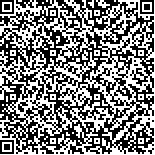下载中心
优秀审稿专家
优秀论文
相关链接
摘要

地表温度日变化模型作为非常重要的输入参数在气象、水文、生态等领域研究中具有重要意义。风云二号(FY-2F)静止气象卫星的地表温度产品的时间分辨率为1小时,这为拟合精确的地表温度日变化(DSTC)模型提供了可能。本文首先利用194个气象站点对应的2014年的FY-2F地表温度产品评价了GOT01、VAN06、JNG06、INA08、GOT09和GEM_V这6种地表温度日变化模型在中国区的模拟精度,对不同时间窗口和不同地表覆盖类型拟合精度的差异进行了分析;其次,选用JNG06模型探究了中国区域地表温度随经纬度、季节和地表覆盖类型的日变化规律。研究结果表明:在不同时间窗口内,GOT09模型获得了全局最优的拟合精度,均方根误差为0.89 K;JNG06和GEM_V模型精度次之,均方根误差分别为0.92 K和0.94 K;GOT01、INA08和VAN06模型精度最差;各模型在城市和建筑区、农用地和自然植被以及常绿阔叶林这3类地表覆盖类型的拟合精度最好,其均方根误差在0.89—0.92 K,在其余地表覆盖类型的拟合精度在1.0 K以上。JNG06模型模拟的地表温度在4种典型的地表类型随纬度的变化规律较为明显,地表温度在1月份随纬度变化较为剧烈,在7月份整体波动较为平缓。综上所述,使用FY-2F地表温度产品建立的DSTC模型在中国区域具有较高的精度,模拟的地表温度随着纬度变化的规律较为明显。使用本文模型既可以纠正现有模型又可获取归一化地表温度产品,同时可以检验和标定陆面模式地表温度模拟结果。
Diurnal Surface Temperature Cycle (DSTC) model is an important input parameter in the field of meteorology, hydrology, and ecology. In the past 20 years, various DSTC models under clear-sky conditions have been developed on the basis of Spinning Enhanced Visible and Infrared Imager (SEVIRI) and Geostationary Operational Environment Satellite (GOES) satellites. However, only a few related studies have focused on China due to its complex topography, geomorphology, and climatic conditions. This situation restricts the application and development of DSTC models in the region. Although the DSTC model is mature, its evaluation is often based on the data of a certain point or day, which lacks verification at a large range of time and spatial scales. Moreover, the free variable setting of the DSTC model cannot meet the need at large time and spatial scales. Thus, the variable setting of the DSTC model must be expanded. In this study, six DSTC models were evaluated on the basis of FY-2F land surface temperature product at the monthly average and large space scales for China. In addition, JNG06 model was used to analyze the diurnal variation characteristics of Land Surface Temperature (LST) with the changes in seasonality, latitude and longitude, and land cover types.
Semi-empirical model is simple and convenient and has a wide range of applications. Physical model is close to the actual physical condition of the surface. Therefore, five semi-empirical models, namely, GOT01, VAN06, JNG06, INA08, and GOT09, and the GEM-V physical model were used for DSTC simulation and analysis. On the basis of the geographical location of 194 meteorological stations, the corresponding FY-2F LST data were extracted, and the average monthly and hourly LST data after quality control were set as the model initial value. To evaluate the fitting accuracy of DSTC model in China, the model evaluation was divided into two parts:1) the fitting of DSTC model was divided into five time periods, and the precision of DSTC model was analyzed; and 2) the fitting accuracy of each model under different land cover types was statistically explored on the basis of the land cover types of 194 stations. JNG06 model was also used to analyze the diurnal variation characteristics of LST with the changes in seasonality, latitude and longitude, and land cover types.
Analysis of the average root mean square error (RMSE) of five time windows showed that GOT09 model obtained the global optimal fitting accuracy with an RMSE of 0.89 K, followed by JNG06 and GEM_V models with RMSEs of 0.92 and 0.94 K, respectively. GOT01, INA08, and VAN06 models obtained the worst accuracy. Each model had the best fitting precision in urban and built-up, cropland/natural vegetation mosaic, and evergreen broadleaf forest with an RMSE between 0.89 and 0.92 K. The fitting precision in mixed forest and cropland followed with an RMSE of around 1.0 K. Each model had the worst fitting precision in barren or sparse vegetation and savannas with an RMSE of above 1.3 K. From the results, we can conclude that the accuracies of GOT01, VAN06, and INA08 are poor in all land cover types and time windows, and the remaining models are relatively robust with close accuracy. The land surface temperature simulated by JNG06 model in four land cover types vary with the changes in latitude and longitude. The rule of LST varies with the change in latitude and but is unaffected by the change in longitude. The DSTC model can be used as the input parameter of climate and hydrological models. The model can also be used as reference for future studies on the DSTC model and its applications.

